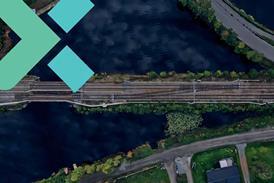ON CHRISTMAS EVE, engineers at Japan's Tsuru - Otsuki Superconducting Maglev test track in Yamanashi prefecture completed their current series of very high speed trials by setting a new world record for an unmanned trainset. Following the achievement of a new manned record of 531 km/h on December 12, the three-car MLX01 prototype trainset was accelerated up to 542 km/h in unmanned mode on December 18.
The two partners in the project, Central Japan Railway and the Railway Technical Research Institute, had indicated that the high-speed test programme would conclude with an attempt to breach the 550 km/h barrier, but the first attempt at this target was interrupted by a transformer failure on December 19.
Unmanned trials resumed at 11.00 am on the morning of Wednesday December 24, and within half an hour the train had been powered up to 545 km/h. From there it was a short step to the 550 km/h target, which was reached twice in the Takagawa tunnel, at 12.07 and 12.37, to conclude the trials.
Following the delivery of the second four-car MLX01 trainset to the test centre in October, the next stage of testing will concentrate on two-train operation. The second trainset incorporates a number of improvements over the first including inductive power collection, resiliently-mounted bogies, and a stretched intermediate car (RG 5.97 p299). Now being commissioned, it is expected to start running in the spring. Once two trains are available, engineers will start to examine the airflows and vibrations generated when passing at speed, both in tunnel and in the open air; no less than 16 km of the 18·4 km test track is underground.
Later in the year, speeds will be increased to a target of 500 km/h, with the ultimate aim being to evaluate the effects of two trains passing at a closing speed of over 1 000 km/h.

















